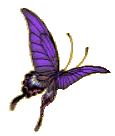Click here
to break out of frames
 |
 © Tammie Chada |
 |
Muncrief Cemetery
Grady County, OklahomaHISTORY UNFOLDS AS MUNCRIEF CEMETERY IS RESURRECTED
Submitted by: Sandi Carter
HISTORY UNFOLDS AS MUNCRIEF CEMETERY IS RESURRECTED
CHICKASHA STAR
Thursday, May 14, 1992By: Donna Stewart
Goals set by the Ninnekah Historical Society some eleven months ago to
restore the Muncrief Cemetery have been reached, and in due time for the
Ninnekah Centennial celebration, according to Bill Evans, project director.
Starting from scratch with a common looking hill, densely wooded and
overgrown with poison oak, green briars, and brush, the society has
resurrected a part of our heritage that has a lot of historical meaning to
the state of Oklahoma.
Walking back through time, the first person to be laid to rest in this now
scenic and peaceful setting is ten year old Robert Muncrief, who died in
1862. Robert was the son of William Muncrief who donated the land for the
cemetery site.
William Muncrief, himself being part Choctaw Indian, married a Choctaw Indian
maiden and was an Indian scout for the U. S. Army at Fort Sill. He scouted
for the men who conducted the Indian raids such as the one on Geronimo.
William died in 1872 almost exactly ten years after his young son, and [is]
buried there in the cemetery that he founded.
After his death, Mrs. Muncrief operated a stage station in the area on the
Anadarko/Pauls Valley line. She supported her five sons and six daughters by
running the state station, store and post office.
Also of interest is the Beeler family plot. On one side of a large monument
is information on the death of the newborn Beeler baby on February 23, 1888,
while the other states the death of the mother Mary Beeler, who died just six
days later on March l.
Research in the Julie Beeler family book showed that the infant died a few
hours after birth. Presuming the mother to be of a sickly nature, the child
was buried temporarily at home until the mother also died six days later on
March 1. At that time, they were both buried in the Muncrief Cemetery and it
is reasonable to assume that mother and child were buried together, possibly
in each others arms in the same casket. Mr. Beeler’s second wife lost two
infant sons in 1895 and 1901 and they are buried in the family plot as well.
Mr. George R. Beeler was the founder of the town of Ninnekah.
Nearby is a large rectangle shaped plot with five markers saying “unknown.”
According to Albert Lawson, a long-time resident of Alex, five cattle
rustlers were caught near the Little Washita river and were killed in a
shoot-out. Mr. Lawson’s grandfather, Thomas Fletcher, helped with the burial
of the five cattle rustlers. Later on in life, Mr. Fletcher was also buried
at Muncrief.
More recently, is the grave of Bud Gibbs who died in 1944. History tells us
that Mr. Gibbs was on a cattle drive when he stopped off here and became the
first teacher for the town of “Fred.” The story has it that he always wore
his “six guns” to school.
The last burial to take place in the Muncrief Cemetery was Sarah F. Earl in
1950. By this time the area was so overgrown that it was inaccessible except
by foot. Therefore, the casket was carried by men from the bottom of the
hill to the top.
Of the sixty-seven dated monuments found, 43 percent died before the age of
fifteen, and the infant mortality rate was extremely high.
Muncrief Cemetery is a sand hill, approximately five acres in size, located
one-half mile east of the east end of Old Fred Road, northeast of Ninnekah.
One-third of the five acre area has been cleared, and has proven to be where
most of the burials have taken place.
In 1937, two separate individuals from the WPA came and made records of the
monuments, with exception of the sandstone markers. Fifty-five monuments
were found at the time. However, with the extensive work that’s been done in
the last eleven months, approximately 150 graves have now been located,
including eight ornate fenced family plots.
Poorer families used sandstones for markers which were likely carried from
the Little Washita River. Because Muncrief Cemetery is located on a sand
hill, time and weather has allowed some of the grave markers to be totally or
partially covered by topsoil. The sandstones (which are not native to the
area) were recently located by probing a pitchfork into the ground. Several
sandstone markers were located with initials carved into them, and one had a
date as well.
The only flowers located in the entire area during the eleven [month]
renovation were located on the grave of Katie May Lawson, mother of Albert
Lawson, Alex. Mr. Lawson some time cut a tunnel through the briars and brush
to be able to place artificial flowers on his mother’s grave. Mr. Lawson had
his mother, baby brother, and grandfather buried in Muncrief Cemetery, and
states that “never in all the years that I have been coming up here have I
seen the cemetery look this good.” Mr. Lawson has been visiting the cemetery
for approximately sixty years.
Many improvements have been made to the area in addition to the eleven months
of digging, chopping, mowing and pruning by volunteers. Gravel for the
cemetery road, and trash barrels have been donated by Joe Brown Concrete, while
Chickasha Monument Co. uprighted those monuments that were knocked over.
Bill Evans of the Ninnekah Historical Society repaired the four broker
monuments and made wooden “unknown” grave markers from redwood or cedar so
that all the graves are now marked. Wal-Mart donated silk flowers, and the
Ninnekah FHA girls are making arrangements to place on each grave, making
this the first time in the last 50 to 100 years that all the graves will have
flowers on them. The youth group of the Ninnekah Baptist Church, along with
two retired gentlemen, helped sprig Bermuda grass, and Ninnekah 4-H students
donated the work on several of the benches.
Plans have been made for a dedication and ribbon cutting ceremony to be held
Sunday, May 24 at 2 p.m. during the Ninnekah Centennial Celebration. The
Muncrief family is hosting a family reunion during the centennial
celebration, and will be taking part in the dedication and ribbon cutting. A
guided tour give[n] by those who undertook the project, will follow. The
possibility of hav[ing] burial plots for sale in the near future is currently
being considered.
With the Muncrief Cemetery clean-up project in its final stages and the
Ninnekah Historical Society so near its goals, steps are being taken to
assure that the area won’t regress to its former state. The most immediate
need concerning the project is for a good riding lawnmower. Those overseeing
the project have used their own lawnmowers during the past year. However,
going through two chain saws and several set[s] of pruning shears in the
eleven months have showed that the “wear and tear” is great and the society
needs to obtain its own equipment before the efforts of the last year are
lost.
The Ninnekah Historical Society is accepting donations for a lawnmower, so
that the Muncrief Cemetery upkeep can continue and “our” part of Oklahoma’s
heritage won’t be lost. Donations can be mailed to Ninnekah Historical
Society, Inc., P.O. Box 5, Ninnekah, OK 73067.